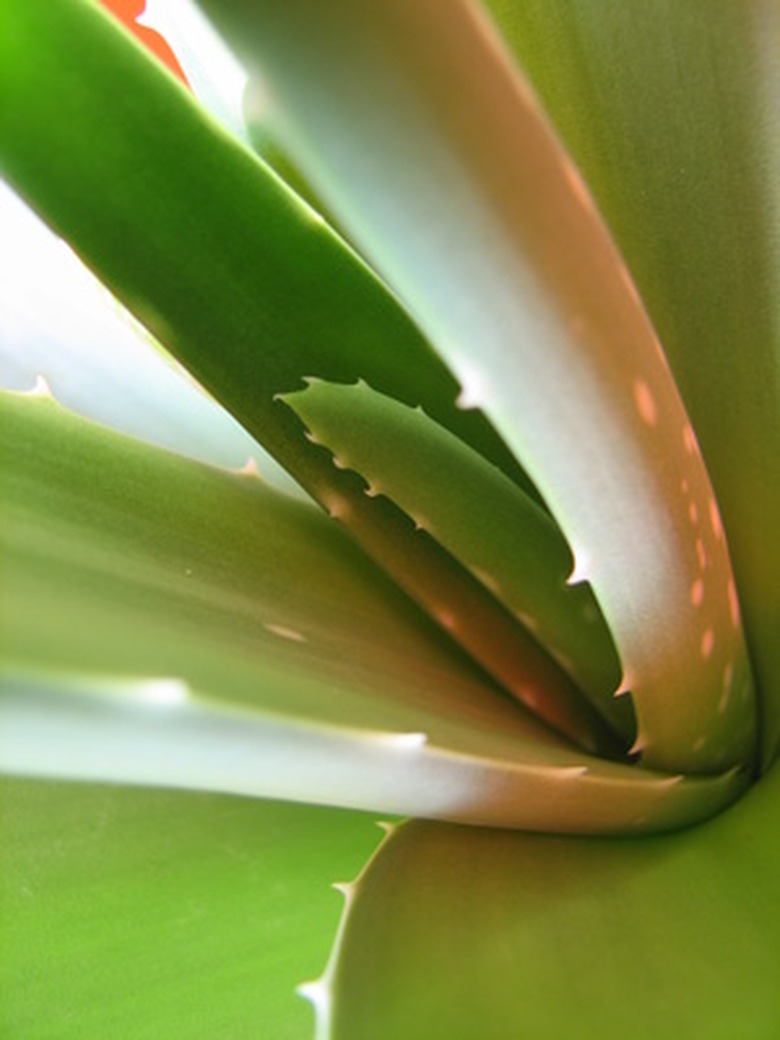How To Grow Aloe Outdoors
Aloe, a well-known medicinal plant with the ability to heal and soothe burns, grows outdoors only in the warmest areas of the United States. Hardy in USDA Zones 9 through 11, the aloe plant needs plenty of sunshine and little water to thrive. Gardeners commonly grow aloe in containers and overwinter indoors. In mild areas of the south, however, the succulent plant becomes a thick ground cover when provided with proper care. Aloe grown outdoors blooms in spring and summer, and its leaves remain attractive year-round.
Step 1
Choose a planting site for aloe that receives full sunlight throughout the day and has poor to average, well-drained soil for the best results. In very warm climates, partial afternoon shade is beneficial. In most cases, however, plants perform best in the sunniest, warmest area of the garden.
- Aloe, a well-known medicinal plant with the ability to heal and soothe burns, grows outdoors only in the warmest areas of the United States.
- In mild areas of the south, however, the succulent plant becomes a thick ground cover when provided with proper care.
Step 2
Dig a hole in the soil of equal depth and twice as wide as the plant's root ball. Place the root system directly into the hole and gently cover with soil. Water thoroughly to compact the soil and collapse any air pockets. Space aloe 12 to 18 inches apart.
Step 3
Water aloe during spring and summer whenever the soil has dried out completely, about once every 10 days. Reduce watering frequency to once every two weeks during fall and once every month during winter when moisture requirements are lower.
Step 4
Feed aloe plants once each year during early spring using a slow-release fertilizer to gradually supply nutrients throughout the growing season. Apply at the rate described by the manufacturer's directions for the best results.
- Dig a hole in the soil of equal depth and twice as wide as the plant's root ball.
- Place the root system directly into the hole and gently cover with soil.
Step 5
Remove dead, damaged or discolored aloe leaves throughout the year as necessary to increase the aesthetic appeal of the plant and conserve nutrients. Remove the entire leaf, as simply severing the affected portion will increase the chance of disease.
Tip
Grow aloe in a container and bring it indoors during winter if temperatures drop below 40 degrees F in your area. Plant in a container with drainage holes in the bottom and use a well-drained succulent or cacti potting mix. Place the container in a sunny windowsill and water once every two weeks. Place the container back outdoors when temperatures rise in spring.
Things Needed
- Manure
- Garden tiller
- Fertilizer
References
- Plants for a Future: Aloe Vera
- "Rodale's Illustrated Encyclopedia of Herbs"; Claire Kowalchik, William H. Hylton, Anna Carr; 1998
